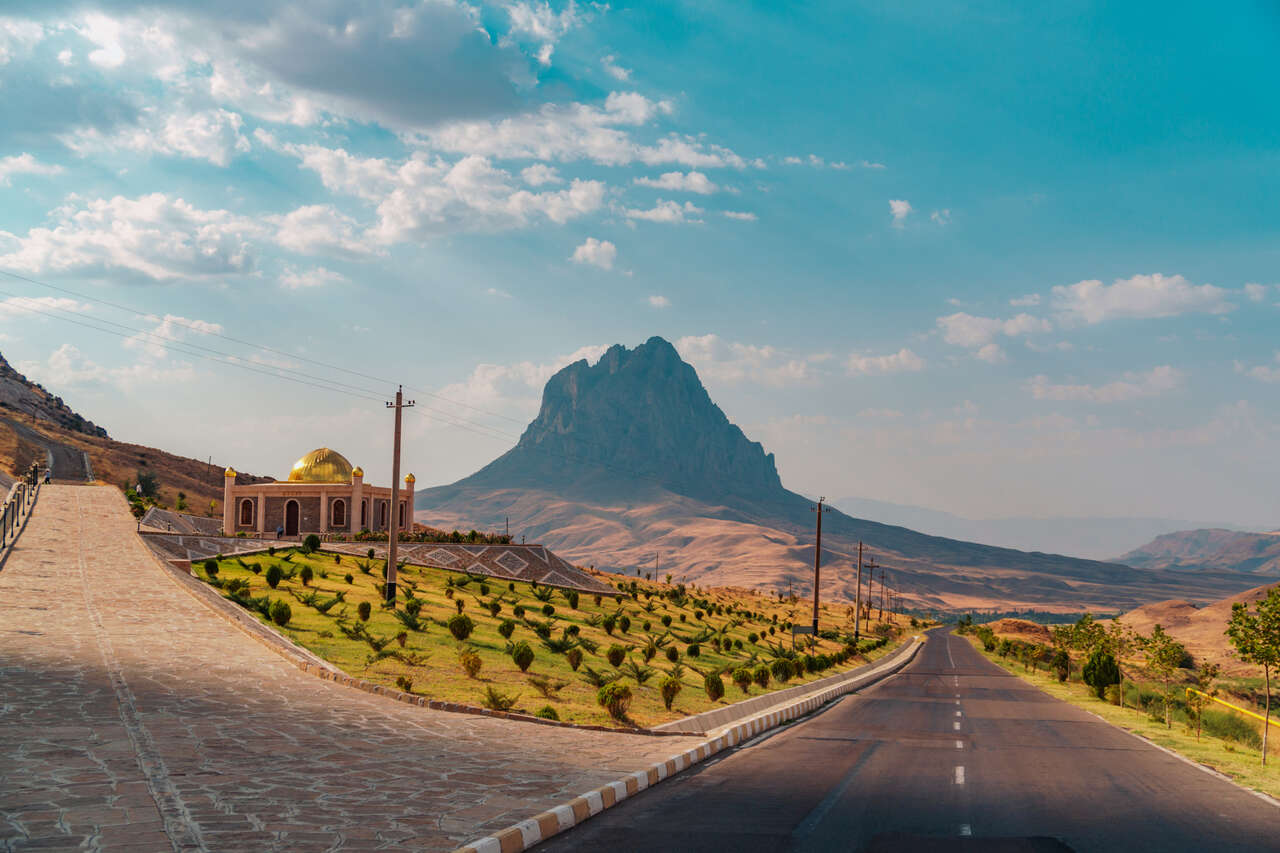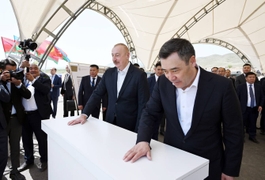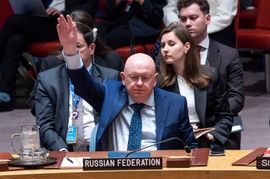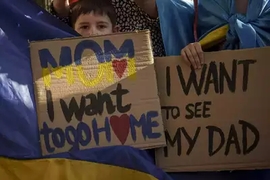In a recent flare-up of tensions along the border, Armenian armed forces launched a series of small arms fire attacks against Azerbaijani military positions in the southwestern Nakhchivan exclave on Monday.
According to the Defense Ministry of Azerbaijan, these incidents occurred between 10:00 PM and 10:20 PM, originating from Armenian positions near the Arazdeyen settlement in the Davali district and the Saybali settlement in the Garakilsa district. Azerbaijani army posts near the Heydarabad settlement of the Sadarak district and the Bichanak settlement of the Shahbuz district were targeted, raising concerns about a potential escalation in hostilities between the two nations.
These recent incidents highlight the fragile nature of the ceasefire in the area, which has been periodically strained, due to activities by Armenian forces. Over the past week, there has been noticeable movement of Armenian troops and heavy equipment towards the conditional border with Azerbaijan. Despite warnings from Baku, this military buildup, including the construction of combat strongholds, has continued, casting a shadow of looming hostilities over the region.
The Defense Ministry of Azerbaijan has warned of taking all necessary preventive measures should the troop buildup lead to renewed assaults on Azerbaijani positions. However, the Armenian side has denied any military reinforcement along the border, claiming the situation along the frontier to be stable.
In the meantime, the recent escalation on the Armenia-Azerbaijan conditional border came on the anniversary of the April War between the two nations in 2016, adding a historical backdrop to the current tensions.
Four Day War
Meanwhile, the recent rise in tension along the Armenia-Azerbaijan border happened to coincide with the anniversary of the April War, also known as the Four Day War. At that time, the Armenian military launched massive artillery bombardments, sparked by military provocations such as the shelling of Azerbaijani villages and civilian settlements near the so-called line of contact.
Lasting from April 2 to April 5, the clashes resulted in the loss of hundreds of lives. Azerbaijan emerged from the Four-Day War having reclaimed approximately 2,000 hectares (about 5,000 acres) of land, including strategic hills and three villages previously occupied by Armenia during the early 1990s First Karabakh (Garabagh) war. In the aftermath, the Azerbaijani government initiated a two-phase revival campaign in liberated Jojug Marjanli, focusing on rebuilding infrastructure and residential buildings, and facilitating the return of over 100 internally displaced families to their native lands.
The April War served as a stark reminder of the full-scale conflict that erupted shortly after Azerbaijan and Armenia gained independence following the dissolution of the Soviet Union. Beginning in 1991, hostilities spanned Azerbaijan’s Karabakh region, lasting until a ceasefire in 1994. During this time, Armenia occupied 20 percent of Azerbaijan’s internationally recognized territories, resulting in the deaths of over 30,000 ethnic Azerbaijanis. In addition, nearly 4,000 people went missing, and one million were expelled from their homes in a brutal ethnic cleansing campaign conducted by Armenia.
Despite four resolutions passed by the UN Security Council, demanding the immediate withdrawal of occupying forces and the return of displaced Azerbaijanis, Armenia failed to comply. The April War represented a significant escalation in the Armenia-Azerbaijan conflict since the 1994 ceasefire, but events four years later changed the landscape dramatically.
Second Karabakh War
On September 27, 2020, Armenia’s forces stationed in the occupied Azerbaijani lands launched attacks on military positions and civilian settlements of Azerbaijan, prompting immediate counter-offensive measures from Azerbaijani forces. The subsequent war concluded with a tripartite statement signed on November 10, 2020, by Armenia, Azerbaijan, and Russia. By that time, Azerbaijani forces had liberated over 300 settlements, including the cities of Jabrayil, Fuzuli, Zangilan, Gubadli, and Shusha, from nearly three decades of illegal Armenian occupation. Armenia also returned the occupied districts of Aghdam, Kalbajar, and Lachin to Azerbaijan by December 1, 2020, as part of the agreement.
Following the 2020 war, Azerbaijani authorities expressed their readiness and commitment to initiating negotiations with Armenia aimed at achieving long-awaited peace in the region. In February 2022, Baku put forth a proposal outlining five fundamental principles to guide the peace talks between the two nations. These principles encompass mutual respect for each other’s territorial integrity, sovereignty and inviolability of internationally recognised borders; rejection of any territorial claims to each other, now and in the future; rejection of any acts that would run counter to UN charter, like the use of force or threat of use of force; delimitation of the interstate border; and opening of communication routes and ties.
However, progress in the negotiation process encountered significant obstacles due to Armenia’s position. Armenia failed to fulfill its obligations under the Trilateral statement, particularly concerning the withdrawal of its armed forces from Azerbaijani territories.
One-day local anti-terror operation in the Karabakh region
The presence of Armenian military units in the Karabakh region of Azerbaijan has sporadically fueled hostilities, resulting in casualties on both sides. Despite warnings from Baku, Armenia neglected to take necessary steps to withdraw its troops from Azerbaijani sovereign territory.
On September 19, 2023, the Azerbaijan Armed Forces conducted a one-day local anti-terror operation to neutralize illegal Armenian armed formations and dismantle their military infrastructure in the Karabakh region. This decision was prompted by mine incidents in the Khojavand district, resulting in casualties among Azerbaijani law enforcement and civilian workers. Azerbaijani troops stationed in the Aghdam district also faced injuries due to the presence of Armenian armed formations in Azerbaijani territories, which were temporarily monitored by Russian peacekeeping forces.
During the operation, the Azerbaijani military successfully targeted military assets outside civilian areas, including artillery systems, radio-electronic warfare equipment, military vehicles, ammunition depots, and strongholds.
As a result of the operation, the armed Armenian separatists in the Karabakh region surrendered on September 20, agreeing to abandon their military positions and withdraw. Subsequently, on September 28, the self-proclaimed separatist regime disbanded itself. President Ilham Aliyev announced on October 15, 2023, the restoration of Azerbaijan’s sovereignty over the entire territory of the Karabakh region.







 President Ilham Aliyev shed light on the evolving contours of the peace process with Armenia during an international conference in Baku this week. ...
President Ilham Aliyev shed light on the evolving contours of the peace process with Armenia during an international conference in Baku this week. ...
 Azerbaijan and Armenia started the process of demarcation of their border on Tuesday, with the installation of the first border markers based on ge...
Azerbaijan and Armenia started the process of demarcation of their border on Tuesday, with the installation of the first border markers based on ge...
 Iranian President Ebrahim Raisi expressed Tehran’s readiness to participate in significant development projects in Sri Lanka during the inauguratio...
Iranian President Ebrahim Raisi expressed Tehran’s readiness to participate in significant development projects in Sri Lanka during the inauguratio...
 Turkmen President Serdar Berdimuhamedow and British Secretary of State for Foreign Affairs, Commonwealth Affairs, and Development David Cameron dis...
Turkmen President Serdar Berdimuhamedow and British Secretary of State for Foreign Affairs, Commonwealth Affairs, and Development David Cameron dis...



